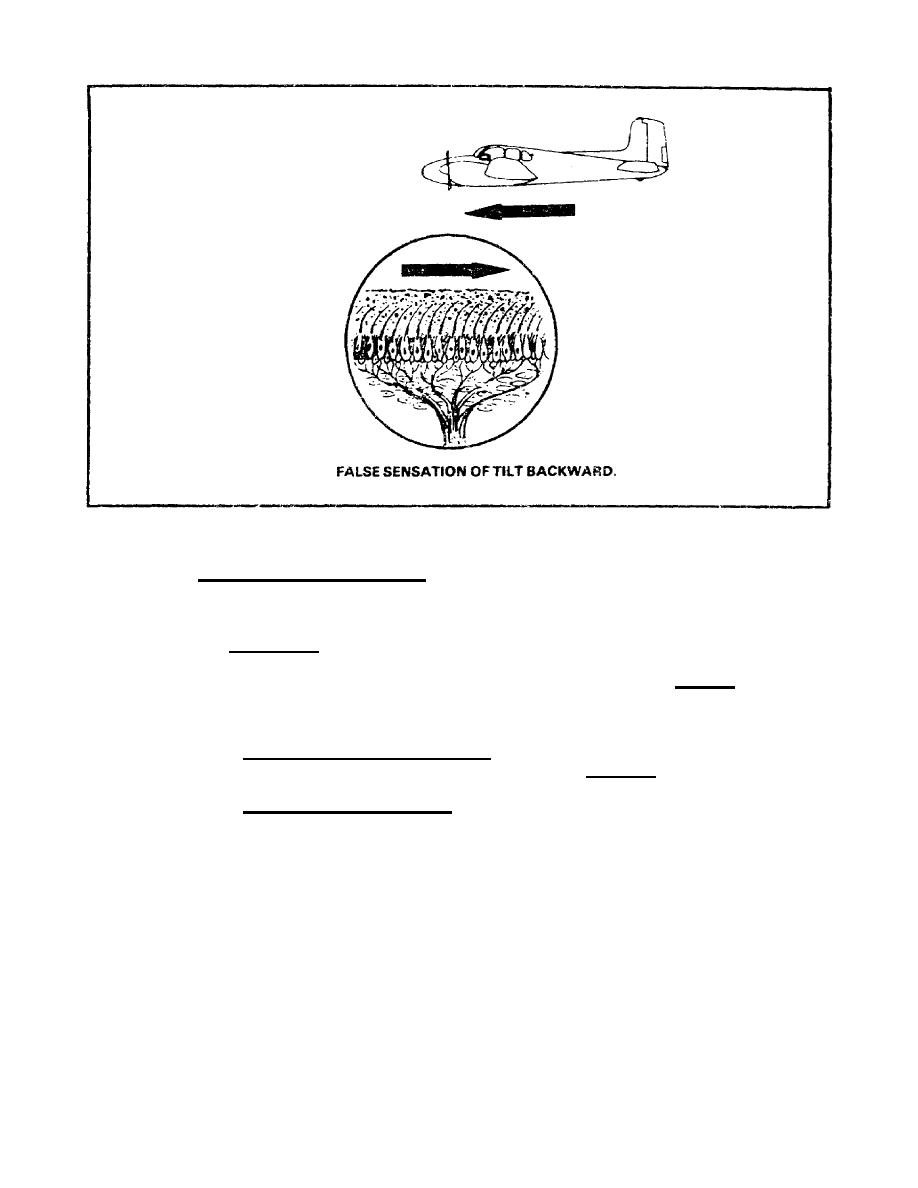
Figure 15.
Sensations from linear accelerations.
(2) The semicircular canals. The semicircular canals of the inner
ear, in sensing changes in angular acceleration, will react to any changes
in pitch, roll or yaw attitude of the head (Figure 16). These canals are
situated in three planes perpendicular to each other. They are filled with
a fluid called endolymph which is put into motion by the inertial torque
resulting from angular acceleration in the plane of a canal. Motion of the
fluid exerts a force upon a gelatinous structure called the cupula located
in the canal. This movement stimulates the vestibular nerve which transmits
an impulse to the brain that is interpreted as rotation of the head.
(a) No movement of endolymph. When no acceleration takes place
there is no movement of endolymph and the sense of no turn is interpreted.
(b) Movement of endolymph. When the canal is put into motion
by angular acceleration the endolymph movement within the canal lags behind
the acceleration and contacts the canal wall opposite the direction of
acceleration. For example, if the acceleration is due to a turn to the left
the endolymph motion will be against the right wall of the canal. The brain
will then interpret the impulse created by this endolymph movement as motion
or a turn to the left.
40


 Previous Page
Previous Page
